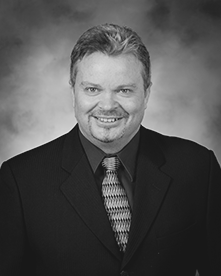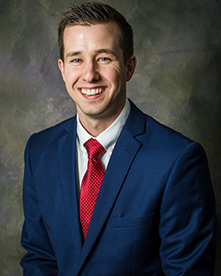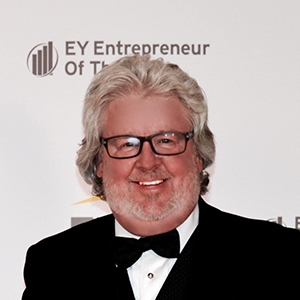Written By: Jess Phillips
Climate change seems to be quite the controversial topic of late. While scientists worldwide have documented a shift in severe weather patterns and extreme temperatures due to increasing C02 levels, the American people at large seem to struggle with the situation. It’s no wonder, as the topic is complicated and often misconstrued in the media.
To help us comprehend how and why climate change is occurring and what we can do about the situation, we sat down with Dr. Steve Oney. He is Ocean Thermal Energy Corporation’s Chief Science Adviser, who boasts over 30 years of extensive experience in ocean engineering.
JP: Let’s get right into it. I’m shocked by the amount of people who don’t accept Climate Change as a reality or as a global issue. What do you say to those people who just don’t believe it’s a valid concern?
SO: Well, [laughs] some of the stuff I can’t repeat, but the reality is you have to look at the source of their skepticism. Many times the skepticism is founded more in their personal interest. It’s easier for people to deny something… to stick their head in the sand when they don’t like the sandstorm that’s coming. Instead of dealing with the problem, they just hope that it passes.
Every other nation in the world believes as a population that climate change is real. The United States is the only one that doesn’t embrace it as a reality. Most other countries- especially highly educated ones- believe in climate change at an 80% level, while the US is only at 50% or 40%.
JP: Why do you think that is- that American’s are so hesitant in particular?
SO: We as Americans have a lifestyle and a way of living that we don’t want to change, and we don’t want to admit that the consumption of resources is contributing to the degradation of the planet, as we know it. It’s time for us to accept that.
Unfortunately, we’re lead by an industry that has a direct interest in maintaining the status quo. They are very powerful and they’re very rich- spending a lot of money lobbying and advertising that this is all in our imaginations.
JP: This past winter was one of the coldest winters we’ve had in a while- specifically in the Northeast. How do you explain that if the Earth is, in fact, heating up?
SO: One of the things that I did in my Master’s work was to explore this. People are complaining “Oh, I’m from Pittsburgh and we had the coldest winter on record,” but the reality is global warming will never be measured by air temperature. That has nothing to do with anything. The heat that’s being gained by the planet that we’re not seeing or paying attention to is the increased heat in the ocean.
The ocean represents 71% of our planet’s surface in volume. 1-degree raise over the last 50 plus years is an enormous amount of energy being stored. That’s where the disjoint comes from in people trying to understand what’s going on.
We saw one of the coldest winters in [the Northeast,] but that doesn’t mean that global warming is a hoax. The change in climate because of the additional heat accumulating in the ocean is changing how the overall weather system works.
JP: How does the temperature of the ocean affect global weather patterns?
SO: Most of the weather system is driven by the transfer of heat from the equator to the arctic zone. There’s a natural pattern that occurs and affects how that heat is transferred.
When the temperature of the ocean rises, Mother Nature doesn’t necessary have the same system, so we’re seeing shifts. Georgia, for example, saw snow this year when they’ve never really seen snow before. You have to understand the entire system, which is driven primarily by the oceans.
JP: So, if 71% of the planet is covered in ocean and those oceans control our weather patterns, it seems we should focus on the health of the ocean as an indication of the overall health of the planet.
SO: You need to understand how the ocean works first and foremost. That’s my biggest frustration as an Ocean Engineer- is that people ignore the ocean and that’s what completely controls our planet. It’s the reason we have life on the planet.
People in Oklahoma, for example, should understand that even though they are far away from the ocean, those tornadoes are created from heat moved from the ocean. That’s what that is. All life, all its forms, the weather, and water distribution- it’s all heat being moved from the ocean to the arctic zones.
Some people want to deny some of the degradation of the coral reefs, and that’s happening because of additional C02 being put in the ocean, which changes the pH. People want to blame it on local pollution, and that’s not the case. What’s [happening] on a global scale is that there’s more C02 in the atmosphere than we’ve seen in thousands of years and that C02 is being absorbed faster in the ocean than we believed it is- changing the pH balance and heating up the coral.
JP: I’ve heard people counter the idea of climate change by stating that the Earth has always had natural fluctuations in the overall climate. How would you respond to that?
SO: Understanding the global integration is very complicated, and I’m not sure anyone fully understands how everything works together. It’s pretty clear when you start taking measurements from the last hundred years how much energy is being put back into the ocean in the form of heat. It’s clear that the last 50-60 years have significantly increased the heat of the ocean more than what the natural cycle did.
That’s where the scientists in my opinion are missing the conversation with the Average Joe. The Average Joe needs to understand where it’s occurring and where we see it. You can’t just measure the atmospheric temperature. The last 10 years have been the warmest temperatures on record, but that’s insignificant when compared to the change in the ocean temperatures in the last 100 years.
JP: I think at the end of the day- if it doesn’t affect people personally and they don’t feel an immediate effect, they just don’t care.
SO: Well, they don’t recognize that it is affecting them. The reality is these storms are getting bigger and stronger more consistently. Have we had bigger tornadoes? Yes. But have we had 10 big tornadoes every year in Oklahoma? No. We used to get 1 or 2 a year, and now we’re getting more and more. People keep blaming it on El Niño and things like that, but hurricanes are getting bigger. Instead of getting 1 category 4 a year, we’re getting 3 or 4.
That’s from heat accumulating in the ocean and as it continues to accumulate more heat, we’re going to see bigger storms and more of them.
We tend to not pay attention to it or say, “it’s just a bad year,” but put 10 of those years together. Do we want to sit around for another 50 years and then avoid it? It will get worse very fast.
JP: Is there any way to reverse the damage we’ve already caused?
SO: In 2008, Bill Gates created a think tank and challenged his team to come up with ideas on how we can prevent global warming or reverse it. One of the solutions that came up was to pump cool water into the surface of the ocean to cool it down somewhat. I don’t know why you wouldn’t want to produce energy at the same time though, like you would if you used Ocean Thermal Energy Conversion.
With OTEC, we could control where we discharge the water, and we could cool down the surface of the ocean a little bit by manipulating the distribution of return water from an OTEC plant. One plant wouldn’t have any effect, but on a global scale, theoretically, we could affect the weather patterns.
JP: How would that work- can you explain how and where we could distribute cool water?
SO: With satellites, we can see where the ocean heats up. That’s how we predict hurricanes. If we had a full-fledged OTEC fleet, we could float in several OTEC plants in that region, take advantage of the heat in the water from that location [to create clean energy,] and simultaneously cool it down to affect the size of the storm. You wouldn’t get rid of it altogether- but you might be able to take a hurricane category 4 or 5 and turn it into a tropical storm instead. It wouldn’t be as devastating.
Now, will we do it? I don’t know. In time, maybe. The problem is now that some of these things have a momentum that is very hard to reverse. It can be done, but do we have the will to do it? I don’t know.
JP: But technically, there is a solution. It’s just a matter of will.
So: Yes, there’s always a solution. We can fix it. We can change it. At some point it becomes economical, because at some point people will pay whatever we need to survive. It will be done. I believe that. I believe we can come up with ideas and ways of reversing it to some extent.
JP: Will there ever be a time when it’s just too late to reverse or control climate change?
SO: The scary part to me is that the ice caps are natural reflectors of sunlight, so when the sun shines down on the ice caps, they reflect back into the atmosphere. If that ice converts to water it becomes an absorber of heat. As the sea levels rise, the warm water expands. 50% of sea-level rise is from thermal expansion, not melted ice. That’s less energy being reflected and more being absorbed, which means global warming will continue at a much more accelerated rate. That’s very scary. That’s the part that I don’t know if we can reverse or not.
Once that processes passes a certain point we can’t figure out how to turn it around. Without a whole bunch of “mirrors” pointing the heat back into the atmosphere, we’re going to have a big problem. It’s going to accelerate and instead of a centimeter a year rise, we’re going to see a 10 centimeter rise. It’s going to get worse before it gets better.
Unfortunately, we are going to suffer if we don’t do something about climate change.
 Stephen K. Oney, PhD – Chief Science Advisor, Ocean Thermal Energy Corporation (OTE)
Stephen K. Oney, PhD – Chief Science Advisor, Ocean Thermal Energy Corporation (OTE)
Dr. Oney has served as President and co-founder of the Company’s wholly owned subsidiary, OTEC Innovation Company (formerly OCEES International, Inc.) and currently serves as OTE’s Chief Science Adviser. He has 30 years of extensive experience in ocean engineering. Dr. Oney spent much of his academic and early professional career researching and developing Deep Ocean Water and Ocean Thermal Energy Conversion (OTEC) technologies at the Natural Energy Laboratory of Hawaii working with the Pacific International Center for High Technology Research and the Solar Energy Research Institute. This hands-on experience with OTEC and SWAC research, design and operation was integral in the research leading to the design and development of the first Net Power Producing Experimental (NPPE) land-based OTEC plant in Hawaii. His vast knowledge places him as one of the world’s foremost OTEC and SWAC experts. Recognized for his expertise, Dr. Oney was elected as the first U.S. Subject Matter Expert (SME) for the International Electrotechnical Commission (IEC) for the development of International Standards for OTEC and Seawater Air Conditioning (SWAC) and is well published on these and other deep ocean technology subjects and has been called upon to publish and deliver numerous international articles and lectures on these technologies.








